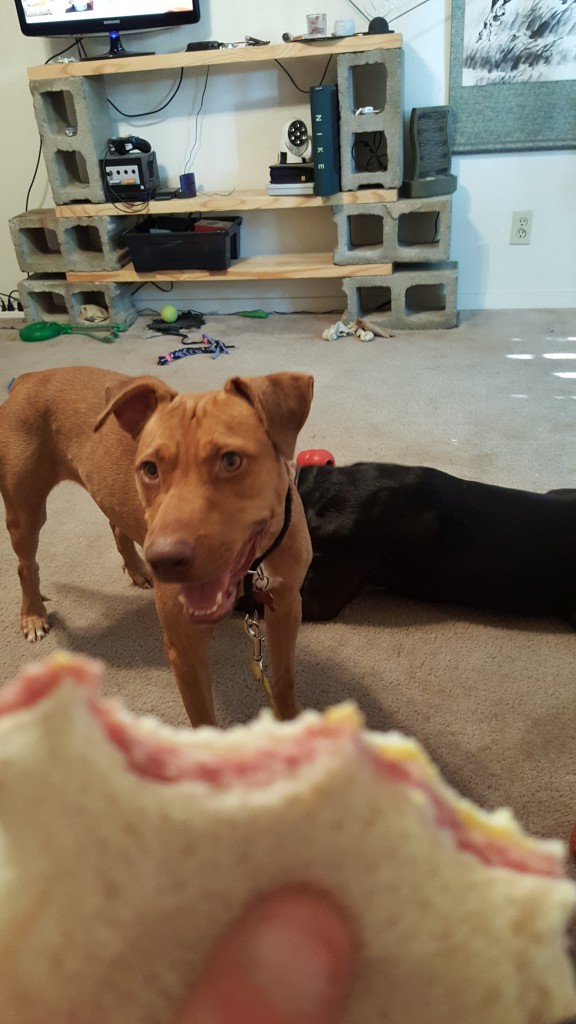Name: Korey
Nicknames: kor-kor, corona discharge, Kaa-reee (like the babysitter in The Incredibles)
Age: 4-ish (acts like 1 or 2)
Breed: Viszla mix
In two words: anxious, excited
Now that Korey has been with us for almost a couple full days and I’m getting to know her a bit, it’s time for the rundown. I though this would also be a great opportunity to talk about how I bring new dogs into my life to set them up for success.
Her first evening here was pretty loud: constant whining, panting, and barking. That’s totally reasonable if I imagine myself going from a place where a bunch of strangers are yelling day and night and I’m confined most of the time to somewhere else I’ve never been with someone I don’t know and have no reason to trust. For Korey it seems like her mind has a hard time slowing down and she was kinda frantic.
When fosters first come in, they stay in my kitchen behind a baby gate for at least a day so they can be a part of what’s going on but not get into trouble. This gives them time to get accustomed to how Galen and I go about things (and for Galen to get used to having a new dog in the apartment) and a space that limits their options to do things other than relax. When I’m gone and at night, fosters are crated (Galen has to be with his separation anxiety) unless they have confinement issues. Korey whined for a while and took about an hour to actually fall asleep the first night, but was much better last night.
For the ones that come in with some anxiety, I give valerian root and L-theanine with meals and melatonin before bed. The first 2 were a big help in managing Galen’s separation anxiety, and have helped past fosters as well, and melatonin is produced by the body before sleep and helps them get on a sleep schedule. Korey still whines quite a bit, but hasn’t panted nearly as much and has lost most of the frantic-ness of yesterday. On walks she’s happy-go-lucky and just awesome, and my instinct tells me once she’s confident in what’s expected of her, that’s how she’ll be all the time. She’s also started to actually engage with me, and we’re working on basic obedience (I’ll get a video, because it’s pretty funny and the before and after will be good).
After they’ve had as long as they need to breathe and let some personality show, they drag a leash and stay in my sight. Once again, limiting chances to make a mistake. From the beginning I walk and potty the dogs together (since I don’t have a yard, they go on leash). I seriously can’t emphasize enough how important daily walks are (or other structured exercise). Aside from all the physical benefits, walks done properly solve a ton of problems people have with dogs, they’re a great team-building exercise (the pack that walks together stays together), and one of the best opportunities to practice leadership. I also make sure that Galen eats and receives affection first (and only when calm), so he’s not unsure about his status and he also shows the new dog how things work.
One more thing for now: the first 2 weeks are super important for setting and enforcing the rules, boundaries, and limitations that will prevent a ton of issues in the future and give you the kind of friendship that people dream about. I don’t allow new dogs on the couch, bed, or my personal space in general. Affection is reserved for when they’re super calm. That last part is especially challenging for a lot of people, especially a lot of women, because the impulse is to love, love, love, when the dog really needs to know what’s expected of her. With a dog like Korey, if I were to start from a place of affection before exercise and discipline, her anxiety would only get worse, but by being strict with rules she can be free of all the worry of having to control anything. That’s what submission is: true freedom.
Korey and Galen have started playing, I’m just trying to get video of the most adorable parts, so stay tuned!

